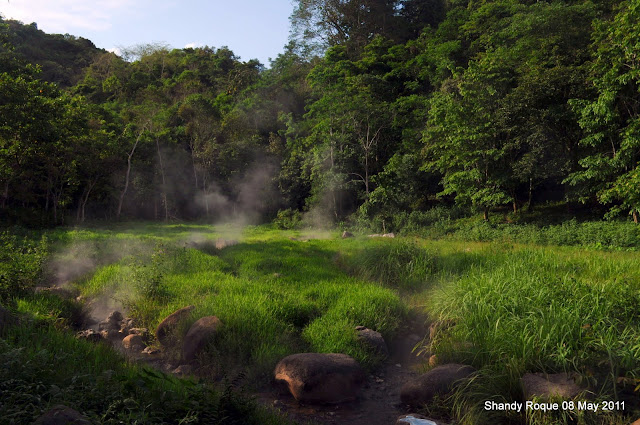Day 10: Vieng Xai to Sam Neua
The day began with a visit to the Vieng Xai caves, a network of caves in limestone mountains which were used as shelter by the Pathet Laos and 23,000 people during the Indochina War in the 1960's. Hidden in the caves are hospitals, schools, meeting rooms, military barracks, a theater and a radio station.
During the 1960's, in order to stop the spread of communism, the United States bombed this area in order to get rid of the Pathet Laos. Their original hide out was in the nearby area of Xieng Khouang but after their base had been bombed, they moved their base to the limestone caves of Vieng Xai. After that, Vieng Xai was heavily and regularly bombed by the Americans. More bombs were dropped in that area than any country in Europe during World War II -- Around 2,000,000 bombs were dropped in this very small area. The people of Vieng Xai had to stay in these impenetrable caves and do their farming and gathering in the evening once the bombing has stopped.
Despite the tremendous amount of ordinance that were dropped in this area, the Americans managed to keep this war a secret. And, for some time, even the Laos government kept this secret. It was only around 2 years ago that this place was opened to the public.
Since we were late for the morning tour, we had to pay for a private tour (around 120,000 kip) along with an entrance fee of 40,000 kip which included an audio guide that was narrated by John Hurt and contained some accounts of people who lived during the war. We were very lucky that four other tourists arrived and we split the fee for the private tour.
The tour included the caves inhabited by the key leaders of the Pathet Laos. These are: Kaysone Phomivhane who was the leader of the Laos People's Revolutionary Party, Nouhak Phoumsavan who was the Minister of Finance during the Second War, Prince Souphannouvong who was the first president of Laos PDR and Khamtay Siphandone who was the supreme army commander of the Secret War. We also got to see the hospital, the school, the theater and the barracks.
 |
| A Meeting Room (found in Kaysone's Cave) |
 |
| Wash Room |
 |
| Bedroom |
 |
| A Contraption Used For Pumping Air |
 |
| Air Holes |
 |
| Nouhak's House By The Cave |
 |
| Bomb Crater |
 |
| Memorial Stupa For Souphanouvong |
 |
| Hospital Cave |
 |
| Really Old Medicine Bottles |
After the tour, we headed to the restaurant where we had drinks yesterday. This time, they were serving food. Unfortunately, I found some maggots wriggling in my fish laap. After my unsatisfactory lunch, we packed our bags and head to Sam Neua where I finally got to eat my lunch at the Dao Nao Muang Xam Restaurant very near the guest house we stayed at. Not only did I enjoy eating the fried rice that I ordered, I also enjoyed the company of the two French girls that we shared the Vieng Xai tour with. It's quite funny that we ran into them there.
 |
| Sam Neua |
Quick Travel Tips:
Watch The Most Secret Place On Earth to know more about the Secret War before coming to
Vieng Xai.
Accommodation
The place we stayed at cost us around 80,000 kip and is around one building away from the Dau Nau Muang Xam Restaurant. There, we got our own en suite bathroom, a TV, A/C and a shared terrace.
The Journey Continues:






















































